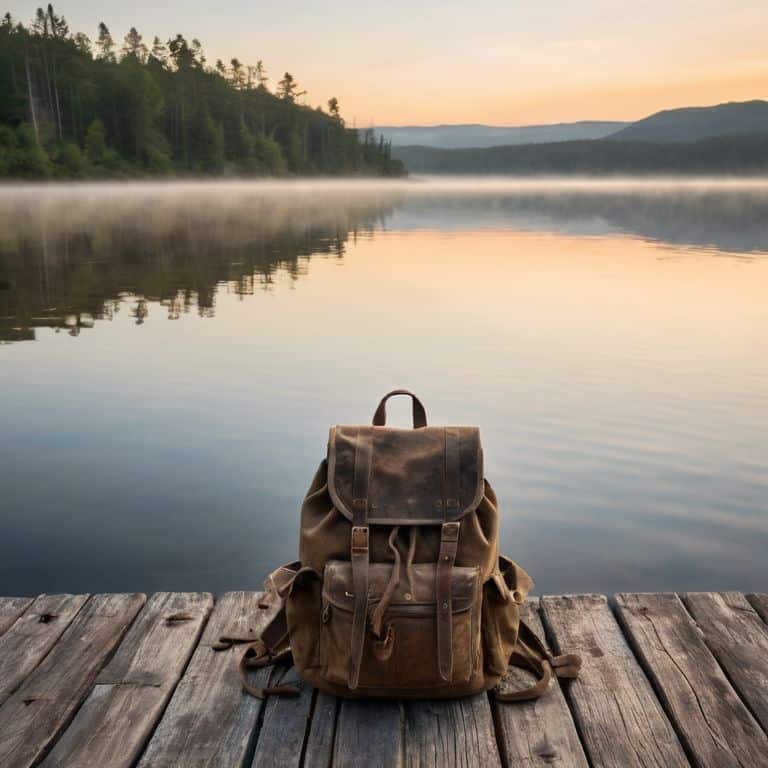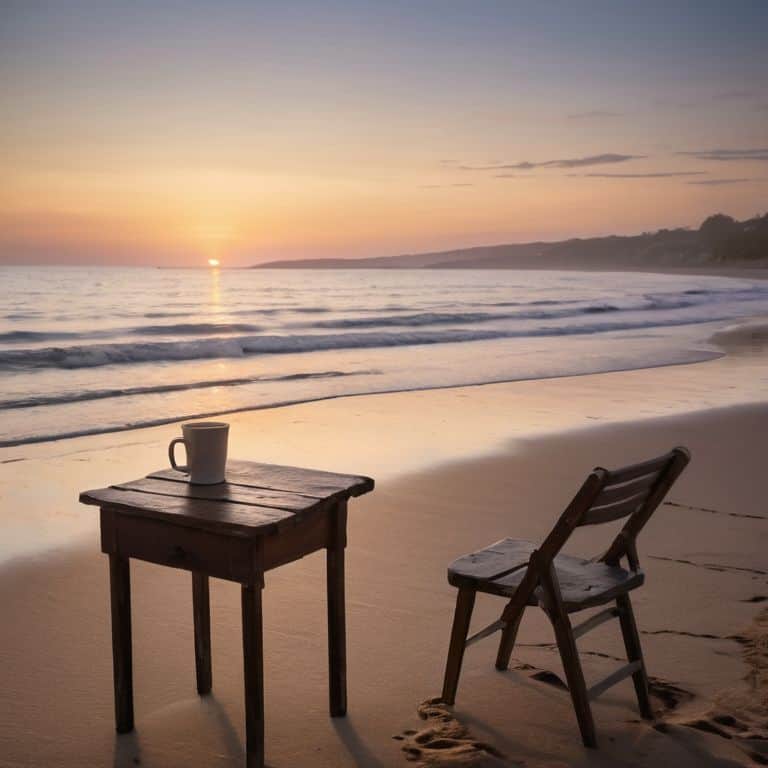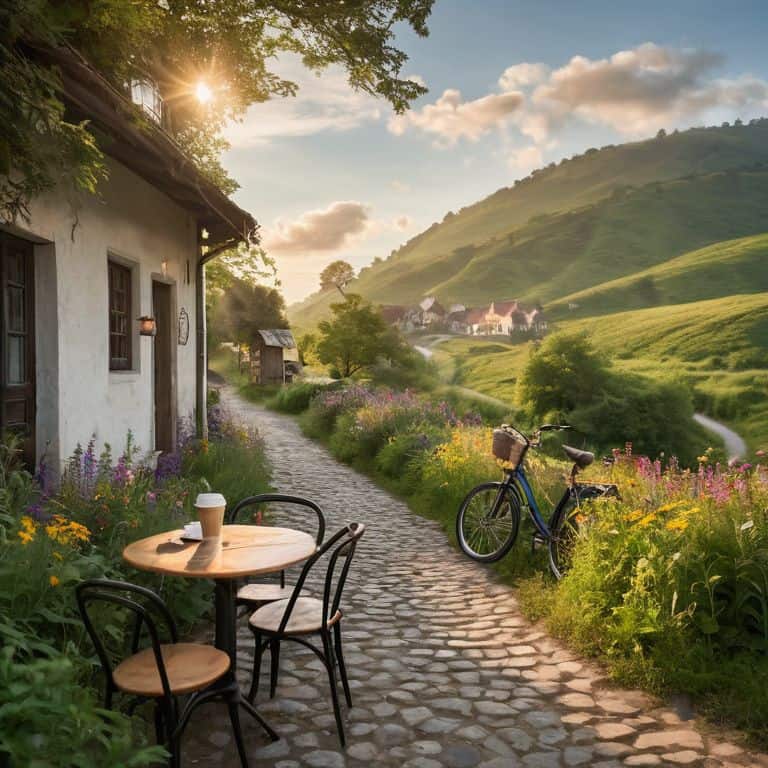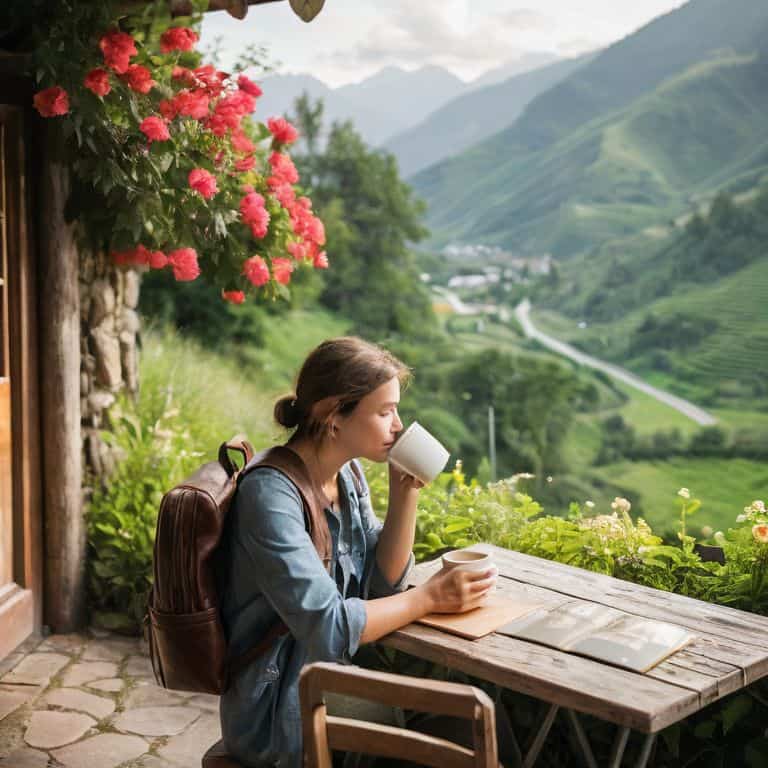As I sat on a weathered stone bench, watching the sunset over a quaint Italian village, I realized that how to practice slow travel wasn’t about checking off a list of destinations, but about embracing the gentle rhythm of a place. The idea that we need to rush from one tourist spot to the next, collecting memories like souvenirs, is a myth that can leave us feeling drained and disconnected. In reality, slow travel is about savoring the journey, not just the destination.
In this article, I’ll share my personal story of transitioning from a fast-paced lifestyle to one that values presence and mindfulness. You’ll learn practical tips for incorporating slow travel into your next adventure, from planning and preparation to immersion and reflection. I’ll show you how to let go of the need for constant productivity and instead, focus on the simple pleasures of exploration and discovery. By the end of this guide, you’ll be equipped with the tools and inspiration to embark on your own slow travel journey, one that will leave you feeling refreshed, renewed, and deeply connected to the world around you.
Table of Contents
Guide Overview: What You'll Need

Total Time: several days to several weeks
Estimated Cost: $500 – $2,000
Difficulty Level: Intermediate
Tools Required
- Travel Planner (physical or digital)
- Map (of your destination)
- Journal (for reflection and notes)
Supplies & Materials
- Packing List (to help you pack light)
- Portable Power Adapter (for charging your devices)
- Reusable Water Bottle (to reduce plastic waste)
Step-by-Step Instructions
- 1. First, let’s start by redefining our approach to travel, focusing on the journey rather than the destination. This means ditching the rushed itineraries and embracing a slower pace. For me, it’s all about savoring the moment, whether that’s watching the sunrise from a mountaintop or simply enjoying a quiet cup of coffee at a local café.
- 2. Next, consider the mode of transportation you’ll be using. Instead of rushing to catch a flight or renting a car, think about taking the train or bus. Not only is this often a more relaxing way to travel, but it also gives you the opportunity to take in the scenery and meet fellow travelers along the way. I love the feeling of winding through countryside on a train, watching the landscape unfold outside my window.
- 3. Once you arrive at your destination, take some time to get to know the local area. Instead of immediately setting out to tick off a list of tourist attractions, take a leisurely stroll around the neighborhood. Notice the architecture, the street art, and the local shops and cafes. This will help you get a feel for the place and discover hidden gems that you might not have found otherwise.
- 4. When it comes to planning your daily activities, try to focus on experiencing the local culture rather than just checking off a list of sights to see. This might mean attending a local festival, taking a cooking class, or simply spending the day exploring a nearby market. For me, it’s all about immersing myself in the senses – the sights, sounds, and smells of a new place.
- 5. One of the most important things to remember when practicing slow travel is to leave space for spontaneity. Don’t overschedule your days, and be open to changing your plans if something unexpected comes up. This might mean taking a detour down a scenic road, stopping to talk to a local, or simply spending the day lounging in a park.
- 6. As you travel, make an effort to connect with the natural world. This might mean taking a hike, going for a swim, or simply spending time in a garden or park. Being in nature has a way of grounding us and helping us feel more present, and it’s an essential part of the slow travel experience.
- 7. Finally, don’t forget to take time to reflect on your experiences as you travel. This might mean keeping a journal, writing postcards to friends and family, or simply taking a few moments each day to pause and appreciate the beauty around you. For me, this is an essential part of the slow travel experience – it helps me to process my thoughts and feelings, and to carry the sense of calm with me long after my trip is over.
Embracing Slow Travel Rhythms

As I reflect on my own slow travel journeys, I’ve come to realize the benefits of slow travel lie not just in the destinations, but in the gentle pace of life it affords. By embracing this rhythm, I’ve found that planning an immersive trip becomes less about checking off a list of sights and more about allowing yourself to be present in each moment. Whether it’s watching the sunrise over a quiet beach or sipping coffee at a local café, slow travel invites you to tune into the local heartbeat.
One of the most beautiful aspects of slow travel is the opportunity to have local experiences in foreign countries. From staying in authentic accommodations on a budget to sampling street food, every encounter becomes a chance to weave a deeper connection with the culture. I recall a particularly memorable evening spent sharing a homemade meal with a host family in a small village – it was a poignant reminder that creating meaningful connections while traveling can be as simple as showing up with an open heart and mind.
As you embark on your own slow travel journey, remember that it’s okay to take your time. Overcoming culture shock is a natural part of the process, and it’s often in these moments of discomfort that we discover the most about ourselves and the world around us. By embracing the unknown and allowing yourself to breathe deeply into each experience, you’ll find that the rhythms of slow travel begin to seep into your very being, inviting a sense of calm and clarity that stays with you long after your journey ends.
Savoring Local Experiences on a Budget
As I wander through the local markets, I’m reminded that slow travel isn’t about breaking the bank. In fact, some of the most memorable experiences can be had on a shoestring budget. I recall a morning spent sipping coffee at a quaint café, watching the locals go about their day, and people-watching for hours – all for the price of a single cup. Or, strolling through a nearby park, taking in the sights and sounds of nature, completely free of charge. These small, sensory delights are the essence of slow travel, and they’re often the most affordable.
By embracing these local rhythms, I’ve found that the true cost of slow travel lies not in the dollars spent, but in the time invested. And that, to me, is a priceless exchange.
Weaving Mindfulness Into Immersive Trips
As I wander through unfamiliar streets, I find that mindfulness is not just about being present, but also about embracing the unknown. It’s in the quiet moments – watching a local artisan at work, or simply sitting at a café, observing the ebb and flow of daily life – that I feel most connected to the place and its people. By slowing down, I’ve come to realize that the true essence of travel lies not in checking off a list of sights, but in absorbing the rhythms and textures of a new environment.
In these moments, my senses come alive – the smell of freshly baked bread, the sound of laughter, or the feel of worn stone beneath my feet. It’s a reminder that mindfulness is not just a practice, but a way of being – one that allows me to weave a deeper, more immersive experience into my travels, and to carry that sense of presence back home with me.
Finding Serenity on the Open Road: 5 Gentle Tips for Slow Travel
- Let go of the need for a packed itinerary and allow for spontaneous discoveries, like stumbling upon a hidden café or taking an unplanned detour through a charming village
- Indulge your senses by trying local, seasonal foods and drinks, and take the time to appreciate the flavors, textures, and aromas of each new experience
- Practice mindfulness in transit by noticing the sights, sounds, and sensations around you, whether it’s the rhythm of the train or the feeling of the sun on your skin
- Prioritize people over places, and take the time to connect with locals, fellow travelers, and the natural environment, fostering a sense of community and belonging
- Embrace the beauty of slow mornings, where you can wake up without an alarm, watch the sunrise, and ease into the day with a warm cup of coffee or tea, setting a gentle tone for the rest of your journey
Slowing Down to Savor the Journey: 3 Key Takeaways
As you wander through new landscapes, remember that the pace of your travel is just as important as the destinations you visit – slow down, breathe deeply, and let the journey unfold at its own gentle pace
By embracing local rhythms and immersing yourself in the everyday experiences of the places you visit, you can transform your travels from a blur of sights and sounds into a rich tapestry of memories and connections
Whether you’re exploring a bustling city or a tranquil coastal town, the art of slow travel invites you to cultivate mindfulness, presence, and a deeper appreciation for the simple beauty that surrounds you, one deliberate step at a time
The Heart of Slow Travel
As we wander, may we remember that the journey is not just about the places we visit, but about the pauses we take, the stories we hear, and the beauty we uncover in the gentle, unfolding moments.
Chloe Emerson
Embracing the Slow Travel Mindset

As I reflect on our journey together through the world of slow travel, I’m reminded of the importance of embracing local rhythms and savoring simple moments. We’ve explored how to weave mindfulness into our trips, from taking time to appreciate the beauty of our surroundings to indulging in the flavors and aromas of local cuisine. By adopting a slower pace, we can truly experience the essence of a place and connect with its people on a deeper level. It’s about letting go of expectations and allowing ourselves to be present in the moment, without the burden of a rushed itinerary.
As you embark on your own slow travel journey, I encourage you to remember that it’s not about the destination, but about the journey itself. It’s about the people you meet, the stories you hear, and the memories you create along the way. So, take a deep breath, be gentle with yourself, and allow the world to unfold at its own pace. In doing so, you’ll discover that slow travel is not just a way of traveling, but a way of being – one that cultivates mindfulness, presence, and a deeper connection to the world around us.
Frequently Asked Questions
How can I balance the desire to see all the sights with the need to slow down and truly experience a place?
As I sit here, sipping my tea and reflecting on my own travels, I’ve found that it’s all about prioritizing depth over breadth. Instead of rushing to see every landmark, choose a few that truly resonate with you and spend a leisurely day exploring them.
What are some tips for dealing with the pressure to constantly be 'on the go' while traveling, especially when traveling with others?
When traveling with others, I remind myself that it’s okay to take a step back and breathe. I prioritize solo moments, like a quiet coffee or a stroll, to recharge. I also try to schedule downtime into our itinerary, whether it’s a relaxing afternoon at the hotel or a leisurely walk along the beach.
How can I make sure I'm being respectful of local cultures and environments while still taking the time to mindfully explore and enjoy them?
As I wander through new places, I remind myself to listen more than I speak, and to observe with gentle curiosity. By doing so, I’ve found that I can tap into the rhythm of a place, and honor its unique spirit. It’s a delicate balance, but one that allows me to truly connect with the land and its people.
